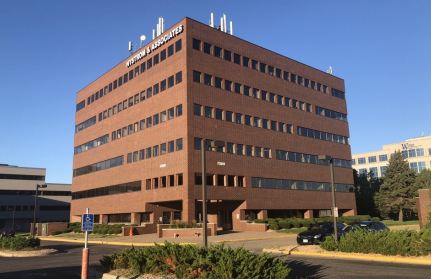Technology Category
- Application Infrastructure & Middleware - Data Exchange & Integration
- Infrastructure as a Service (IaaS) - Cloud Databases
Applicable Industries
- Cement
- E-Commerce
Applicable Functions
- Logistics & Transportation
Use Cases
- Construction Management
- Infrastructure Inspection
Services
- Cloud Planning, Design & Implementation Services
- System Integration
About The Customer
PostNL is a leading mail, parcel, and e-commerce service provider operating in the Netherlands, United Kingdom, Germany, and Italy. The company has over 10,000 employees and uses Oracle and SQL Server as its primary data sources. PostNL was an early adopter of cloud technology, leveraging Fivetran’s cloud capabilities to migrate its applications to the cloud and integrate these cloud systems on an ongoing basis. Prior to its cloud migration, PostNL had been using Fivetran for 15 years to support a massive, distributed track-and-trace application comprised of more than 250 databases. The company expanded its use of Fivetran to a variety of data integration use cases across the enterprise, giving it the confidence to move forward with its cloud migration.
The Challenge
PostNL, a mail, parcel, and e-commerce service provider in the Netherlands, United Kingdom, Germany, and Italy, decided to migrate its IT operations to the cloud to maintain its competitive edge and reduce costs. The company aimed to decommission its on-premises data centers and move its applications, infrastructure, and IT management to the cloud. The applications ran on Oracle and SQL Server, and where possible, PostNL wanted to replace existing bespoke software with Software-as-a-Service (SaaS). If a suitable SaaS replacement was not available, the company planned to implement the legacy and bespoke software on top of cloud-based infrastructure and platform services (IAAS and PAAS). PostNL initially chose the Microsoft Azure platform for these services and later added Amazon Web Services to avoid the risks of running its entire infrastructure onto a solution from a single vendor. The migration process, which took over two years, presented significant integration challenges. PostNL needed to move applications and data to the cloud, ensure the migrated applications continued communicating with the existing on-premises systems, and integrate various cloud environments.
The Solution
PostNL leveraged Fivetran’s cloud capabilities to simplify its migration process. Unlike many migration/integration solutions that are dependent on the application's location, Fivetran enabled PostNL to implement a “lift and shift” approach. With Fivetran installed on each data platform, PostNL could move each database to the cloud and then redefine its location in Fivetran without having to alter the application. This approach allowed for easy, incremental migration of applications to the cloud while maintaining existing integrations. The same approach was used whether migrating applications to the Azure cloud or adding services from other cloud platforms, such as Amazon’s EC2. Once applications were in the cloud, PostNL needed to integrate across cloud platforms. To address this challenge, PostNL deployed a cloud-based Fivetran integration service. Adopted in 2014, this service operates as a cloud integration hub for PostNL, connecting all of its cloud-based solutions.
Operational Impact
Quantitative Benefit

Case Study missing?
Start adding your own!
Register with your work email and create a new case study profile for your business.
Related Case Studies.

Case Study
System 800xA at Indian Cement Plants
Chettinad Cement recognized that further efficiencies could be achieved in its cement manufacturing process. It looked to investing in comprehensive operational and control technologies to manage and derive productivity and energy efficiency gains from the assets on Line 2, their second plant in India.

Case Study
Digital Transformation of Atlanta Grout & Tile: An IoT Case Study
Atlanta Grout & Tile, a Tile, Stone & Grout restoration company based in Woodstock, Georgia, was facing challenges with its traditional business model. Despite steady growth over the years, the company was falling behind the web revolution and missing out on the opportunity to tap into a new consumer base. They were using independent software from different vendors for each of their department information and workforce management. This resulted in a lot of manual work on excel and the need to export/import data between different systems. This not only increased overhead costs but also slowed down their response to clients. The company also had to prepare numerous reports manually and lacked access to customer trends for effective business decision-making.

Case Study
Revolutionizing Construction Equipment Rental: A Case Study on ProsRent and ENO8
ProsRent, a startup that won the 'Best Financial Opportunity' and 'Best Pitch' at CodeLaunch 2016, aimed to revolutionize the way construction professionals source and rent heavy equipment. In the construction industry, project managers and contractors typically rent heavy equipment from supply companies. However, predicting inventory can be challenging, and finding the required equipment at the right time and place can be a hassle. If the preferred vendor doesn't have the required equipment, it results in wasted time and money in searching for it, often leading to higher costs due to non-preferred rates and increased delivery costs if the vendor is located far from the job site. Suppliers, on the other hand, desired access to a wider base of trusted renters that they didn't have to vet themselves and wanted to offer dynamic rental pricing based on demand and availability in their market. ProsRent's challenge was to produce a minimum viable product that was fast and first to market but also strong enough to engender loyalty and repeat business from the target market.

Case Study
IoT Solution Enhances Comfort and Energy Efficiency at Apple Valley Commons Office
Apple Valley Commons, a mixed-use office complex built in 1986, was facing significant comfort and energy efficiency challenges. The building, which houses a variety of businesses, was experiencing extreme temperature imbalances, causing discomfort to employees and clients. Despite outdoor temperatures being consistently high during summers, occupants had to use space heaters to keep warm. The electricity bills from the constant operation of the heat pump were exorbitant. The building's elevator room on the roof was also overheating, reaching temperatures of 130 to 140 degrees, causing the elevator equipment to shut down. The building's existing controls solution did not provide a front end for diagnostics or remote control. The building management was seeking a solution that could address these temperature issues, improve occupant comfort, reduce operational costs, and increase building visibility.

Case Study
Revamping EE's Legacy ERP: A Case Study on BT's Strategic Transformation
EE, even after its merger with BT, was operating its ERP estate on legacy infrastructure, hosted on the premises of a third-party supplier. This outdated system resulted in a volume-based operational model, higher time to market, longer delivery cycles, and unsatisfactory customer experience. BT recognized the need for a strategic transformation of these aging ERP systems and sought a partner who could proactively manage application services. The partner was also expected to handle development requirements associated with application management services, drive accountability, and ownership with a time and target-driven transformation of these services. BT's primary goals were to improve customer experience, reduce cycle time, and measure these improvements with precision.




